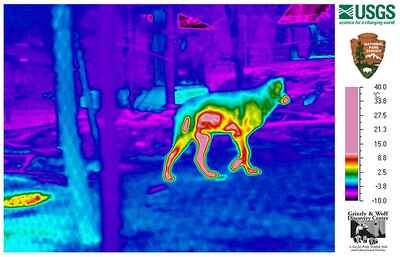Environmental System Definition, Design, and Types Explained
Environmental system is any structure or framework which encompasses individuals, events, or phenomena, and the dynamic relationships between them.
This article discusses environmental system definition, design, and types, as outlined below;
-Environmental System Definition: 4 Ways to Define Environmental Systems
-Types of Environmental Systems
Environmental System Definition: 4 Ways to Define Environmental Systems
An environmental system is a system in which various units or entities interact with each other and with the components of their surroundings.
The above is a most basic definition of the environmental system, which highlights its internal dynamics.
Several different contexts can be used to outline the environmental system definition. One of them is the context of biology, which describes environmental systems as ecosystems. This is shown below;
Environmental system is a system comprising of biotic and abiotic factors that interact within various ecologic segments or spheres that include; atmosphere, hydrosphere, lithosphere and biosphere [3].
Asides the biological perspective, another scientific context in which environmental systems can be understood is the context of thermodynamics. Below is an alternative environmental system definition that applies this perspective;
Environmental system is a definable system with boundaries within and across which energy and mass may be transferred or transformed [5].

The above definition covers many attributes of environmental systems within both biological and physical contexts, including how various forms of energy like bioenergy and thermal energy are transformed, consumed and conserved in the environmental system.
The final environmental system definition is given below, which tries to apply a holistic, all-encompassing view to the nature, possible contexts, elements and dynamics of environmental systems;
An environmental system is a system or organization comprised of various elements that can be effectively managed by adopting a framework that reduces the impact of internal and external dynamics on the system and its resources.
The above definition accounts for environmental systems in the context of science, technology, and economics among others. It shows how effective management can mitigate environmental impacts through resource conservation and sustainable development.
Examples of environmental systems include natural biomes like grasslands and forests, business organizations, and sociological units like homes, interpersonal links and child-developmental surroundings.
Environmental System Design
Environmental System Design (ESD) in engineering is the analysis, modulation and modification of complex systems that comprise of multiple internal elements whose functions are co-dependent and essential to the overall operation of the system(s).
Aspects of environmental system design are;
2). Fluid mechanics
3). Impact assessment
4). System performance (resource and energy efficiencies)
5). System modeling
Types of Environmental Systems
Types of environmental systems are; ecological, thermodynamic, and socioeconomic systems. The Bronfenbrenner theory is a widely accepted framework that outlines the types of environmental systems in such a manner that explains both socioeconomic and ecologic viewpoints;
1). Microsystem (as one of the Types of Environmental Systems)
The microsystem is a type of environmental system which comprises of elements that form the immediate surroundings of an organism or phenomenon.
It is the smallest type of environmental system, as well as the most-directly impactful, so that the conditions of the microsystem have the strongest effect on its internal components and dynamics, compared to other types of environmental systems.
It is also important to note that the interaction between the microsystem and its components is bi-directional or interactive. This implies that components of microsystems create, shape and modify the system just as the system modifies them.
There are different contexts in which it is possible to define a microsystem.
In ecology, a microsystem is comprised of physicochemical and biological factors that affect organisms directly, such as those within their habitat.
Bronfenbrenner theory describes the microsystem from a socioeconomic perspective, as the immediate environment in which a developing individual is situated [2].
Socioeconomic microsystems may also be represented by organizational departments that are tailored to a specific function.
Examples of microsystems are; peer groups, routine activities, neighborhoods, and habitats.

2). Mesosystem
The mesosystem is also called relational-environmental system.
A mesosystem environment is one which comprises of multiple microsystems and the links or relationships between them. An example of mesosystem is the pattern of relationships between elements of an individual's personal life, such as an adult's family and work, or a child's peers and parents.
The role of a mesosystem in environmental system theory and studies is to define the intersections and non-alignments between various factors that have direct effect on the functioning of environments and their components.
In Urie Bronfenbrenner's ecological systems theory, the mesosystem is viewed as a representation of the nature of interactions between individuals and their environment [1].
Mesosystems are important for determining the sustainability of systems based on the internal and external equilibrium of (physical, ecological, social) dynamics.
3). Macrosystem (as one of the Types of Environmental Systems)
Macrosystem can be explained as the environmental system that encompasses individuals, their immediate surrounds and their interrelationships. Examples of macrosystems include large biomes, legal, cultural, economic and educational frameworks.
The best example of macrosystem is socio-cultural frameworks, because they completely encompass the nature, behaviors, conditions, immediate surroundings, and relationships of individuals.
Macrosystem can be viewed as the largest and most complex type of environmental system with regards to the assessment of individual entities in the system.
4). Chronosystem
The chronosystem is a type of environmental system that defines the sequence and impacts of events on individuals [4]. Examples of chronosystems include socio-historical factors or events like divorce, death, growth and development.
According to Bronfenbrenner, the chronosystem of a child comprises of transitional events in the child's development, and the physiological and social impacts of these events.
5). Exosystem (as one of the Types of Environmental Systems)
Exosystem is a type of environmental system that comprises of all factors external to the immediate environment of an individual, which still affect the individual indirectly.
The best example of exosystem is the interaction between mesosystems that are distantly related, such as interpersonal relationships between individuals in two separate organizations.
Other examples of exosystems include; government policies, family friends, and the media.
6). Open, Closed, Isolated Environmental Systems
Open, closed and isolated systems are types of environmental systems in thermodynamics. These systems are evaluated based on the internal and external dynamics of matter or mass, and energy.
Open systems are environmental systems with boundaries across which both matter and energy can be transferred. Closed systems allow the transfer of energy but not matter, while isolated systems allow neither energy not matter to cross their boundaries.
Conclusion
Environmental system is a socioeconomic, physical or thermodynamic structure that comprises of individual entities and their interactions with each other.
Examples of environmental systems are natural biomes, business organizations, homes, interpersonal relationships, and events.
Types of environmental systems are;
1. Microsystem
2. Mesosystem
3. Macrosystem
4. Chronosystem
5. Exosystem
6. Open System
7. Closed System
8. Isolated System
They can be broadly categorized into three types, which are; ecological, thermodynamic, and socioeconomic systems.
References
1). Frey, L.M. (2019). "Mesosystems in Family Systems Theory." In: Lebow, J.L., Chambers, A.L., Breunlin, D.C. (eds) Encyclopedia of Couple and Family Therapy. Springer, Cham. Available at: https://doi.org/10.1007/978-3-319-49425-8_287. (Accessed 16 March 2023).
2). Özdoğru, A. (2011). "Bronfenbrenner’s Ecological Theory. In: Goldstein, S., Naglieri, J.A. (eds) Encyclopedia of Child Behavior and Development." Springer, Boston, MA. Available at: https://doi.org/10.1007/978-0-387-79061-9_940. (Accessed 16 March 2023)..
3). Peng, G.; Shao, Y.; Leslie, L. M. (2002). ." Environmental Science. In: Peng, G., Leslie, L.M., Shao, Y." (eds) Environmental Modelling and Prediction. Springer, Berlin, Heidelberg. https://doi.org/10.1007/978-3-662-04868-9_1. (Accessed 16 March 2023).
4). Schaie, K. W.; Willis, S. L.; Pennak, S. (2005). "An Historical Framework for Cohort Differences in Intelligence." Res Hum Dev. 2005;2(1-2):43-67. Available at: https://doi.org/10.1080/15427609.2005.9683344. (Accessed 16 March 2023).
5). Vargas, A. G. (2010). "Boundaries, Interactions and Environmental Systems." Available at: https://www.semanticscholar.org/paper/BOUNDARIES-%2C-INTERACTIONS-%2C-AND-ENVIRONMENTAL-Vargas/cdb57f5397cc6e9aaaf771adfdbc849da2a8095f. (Accessed 16 March 2023).




